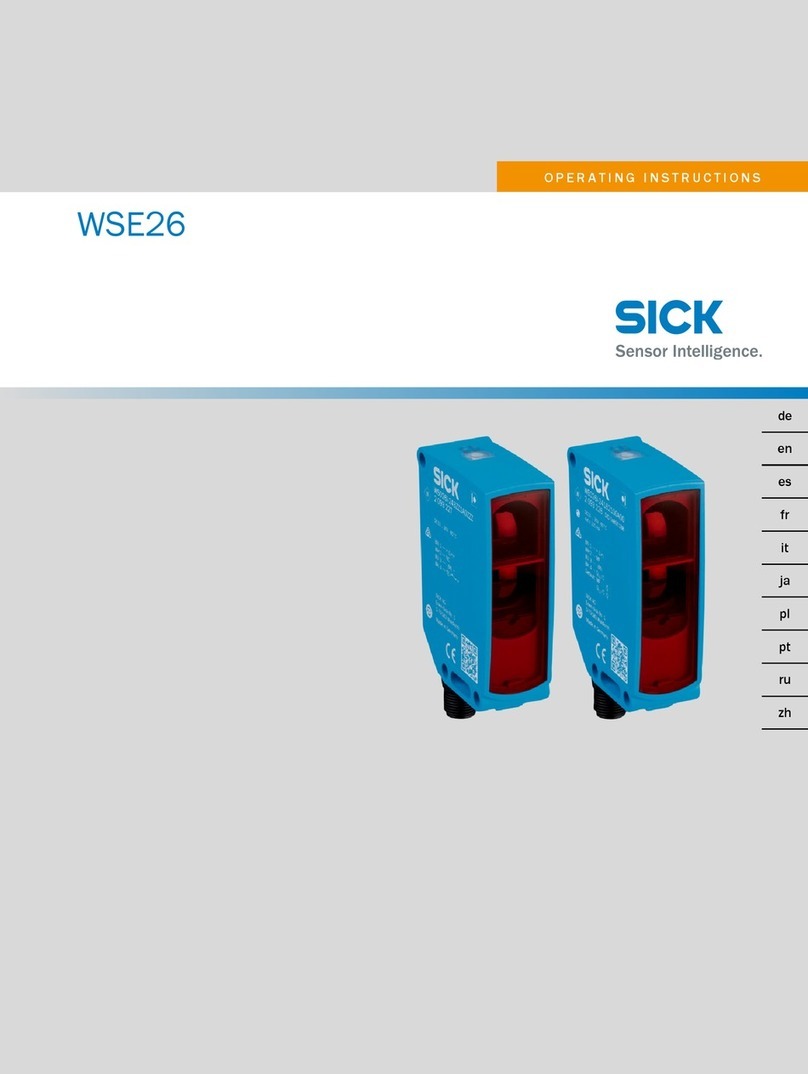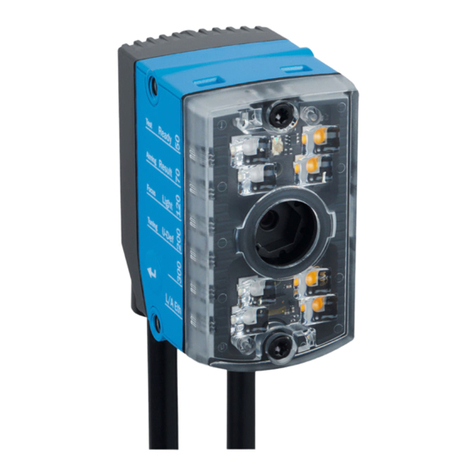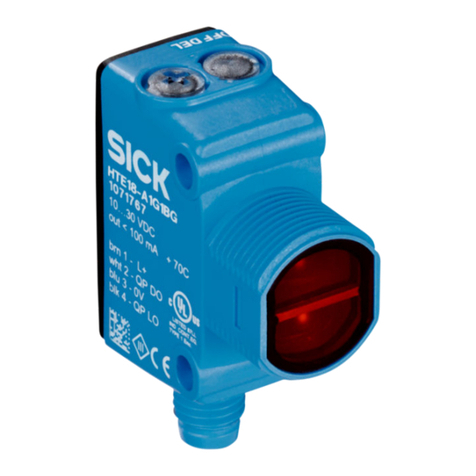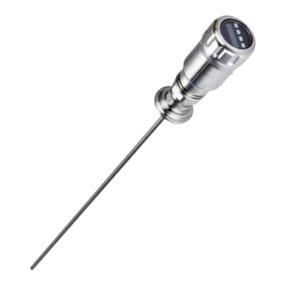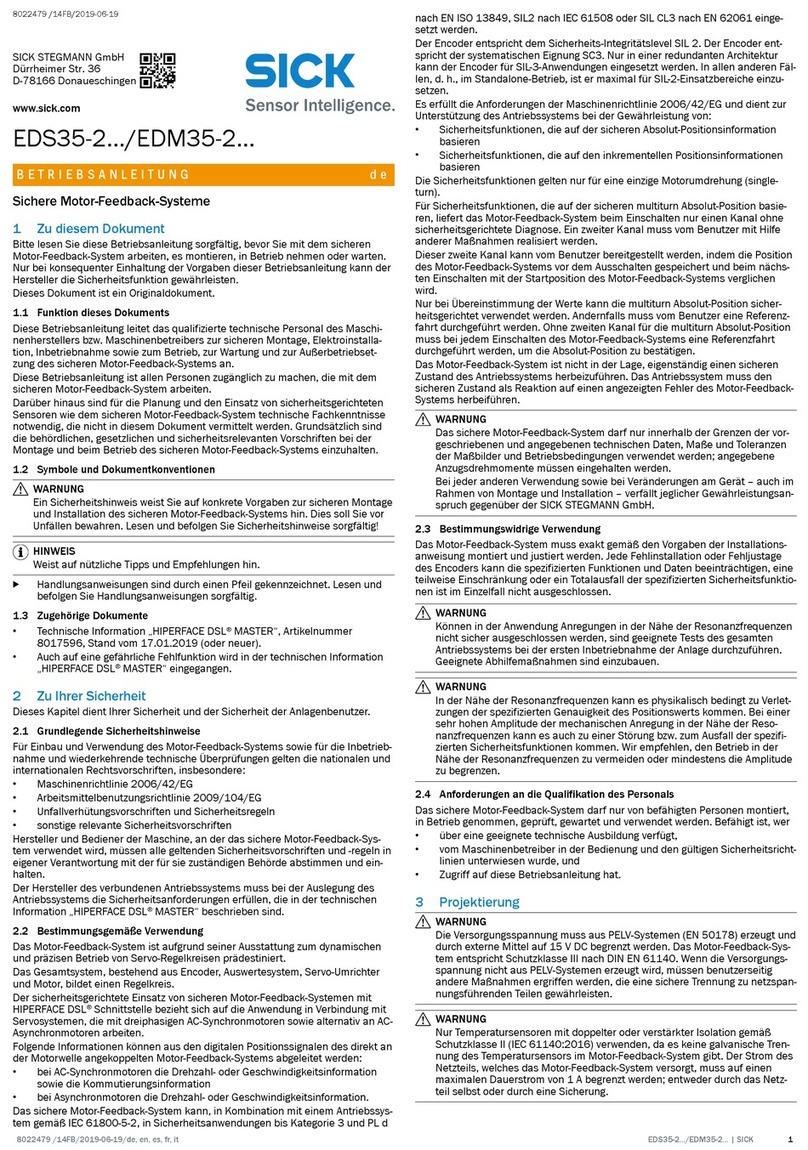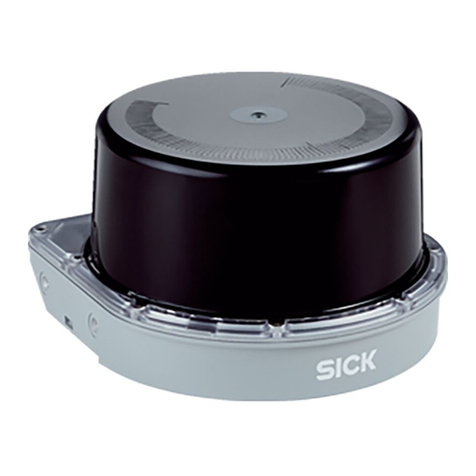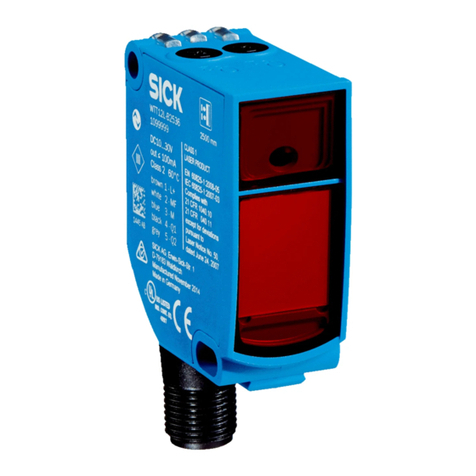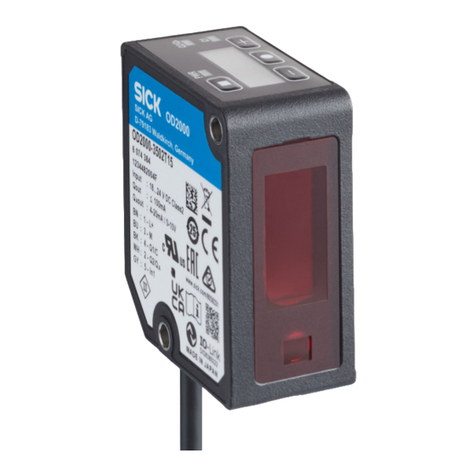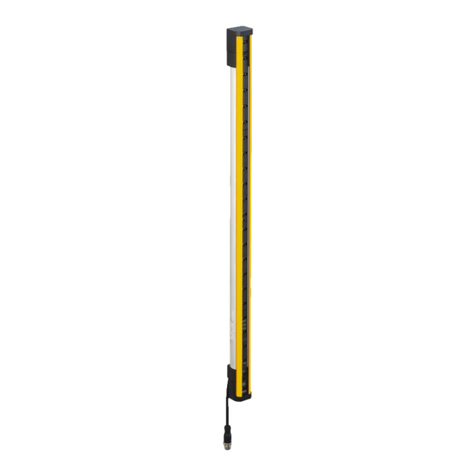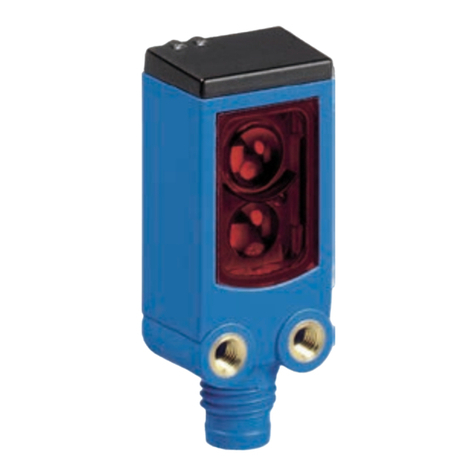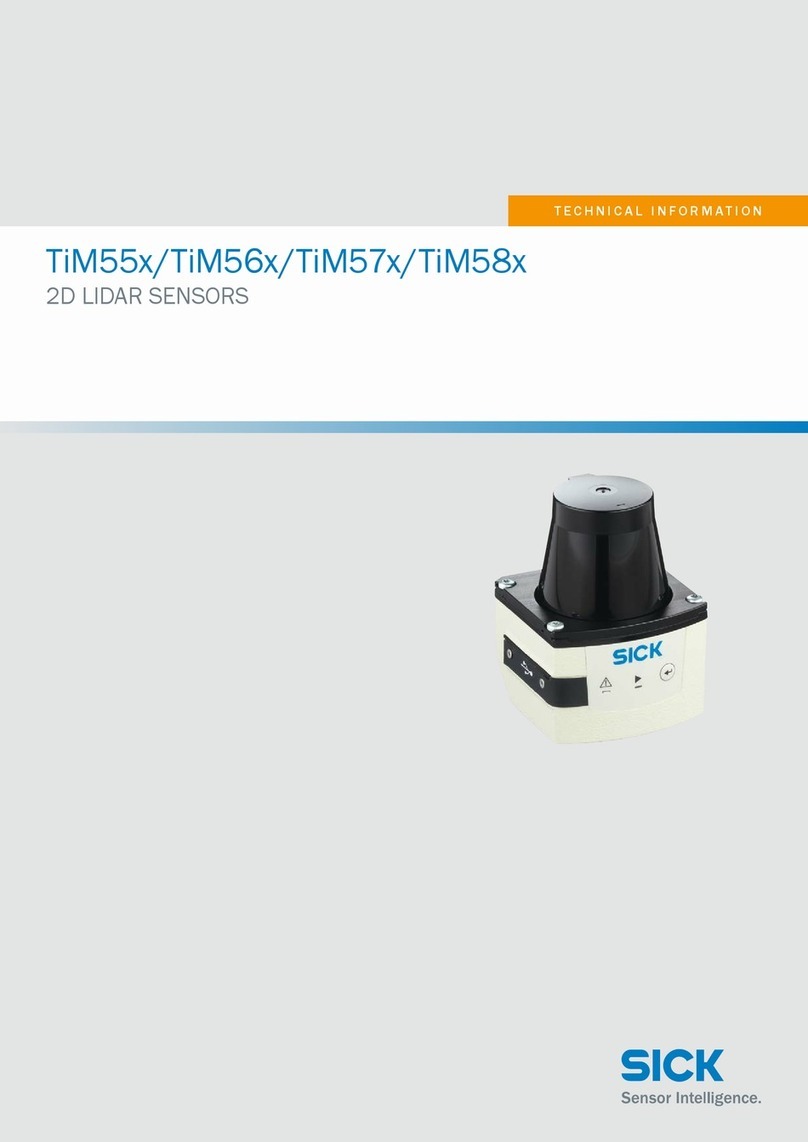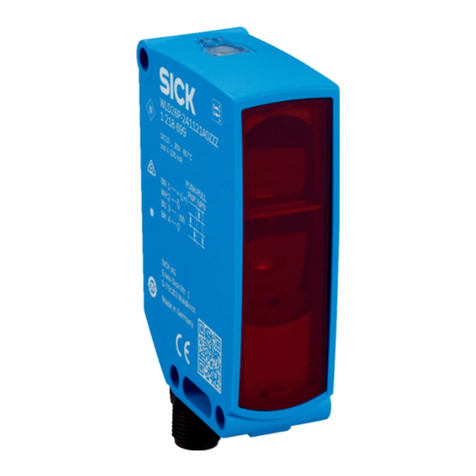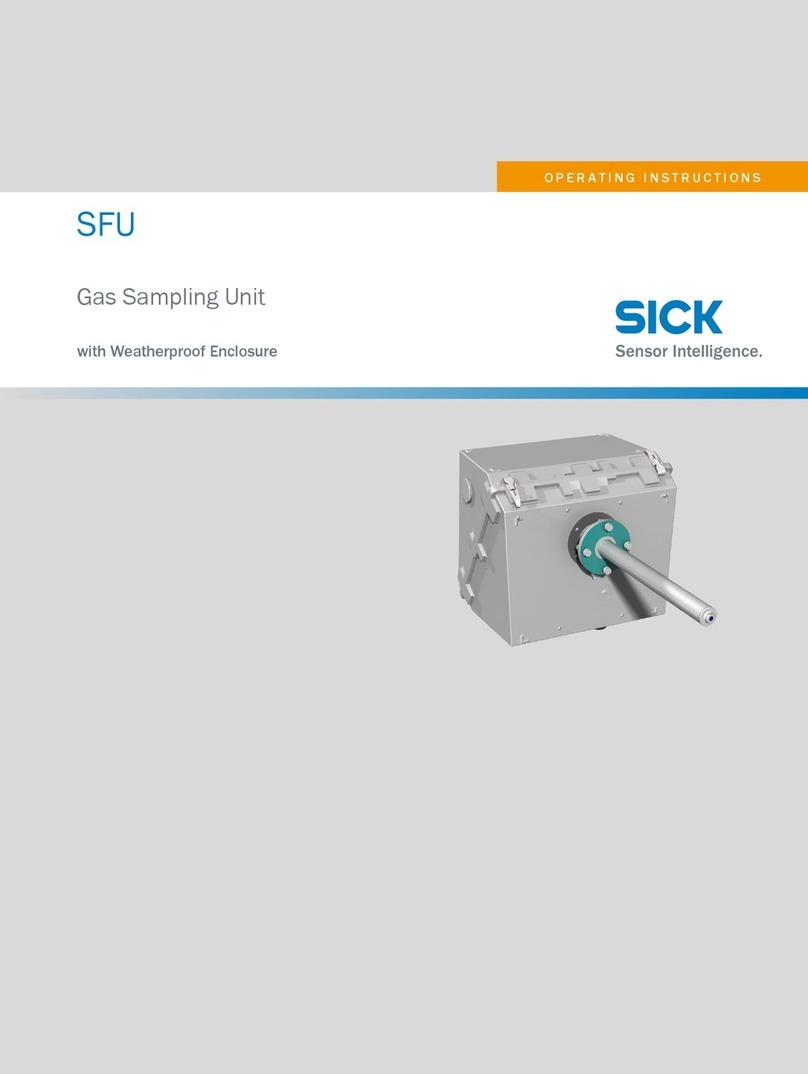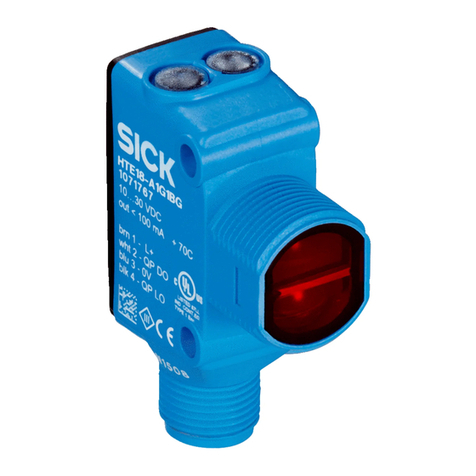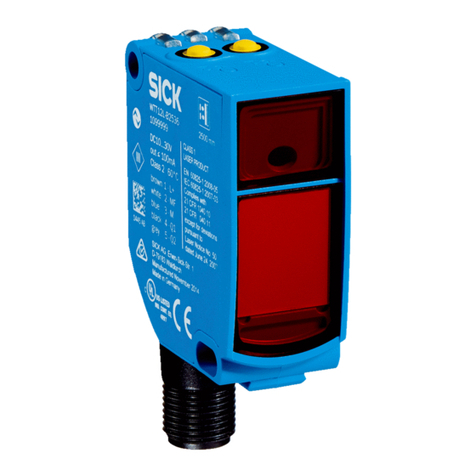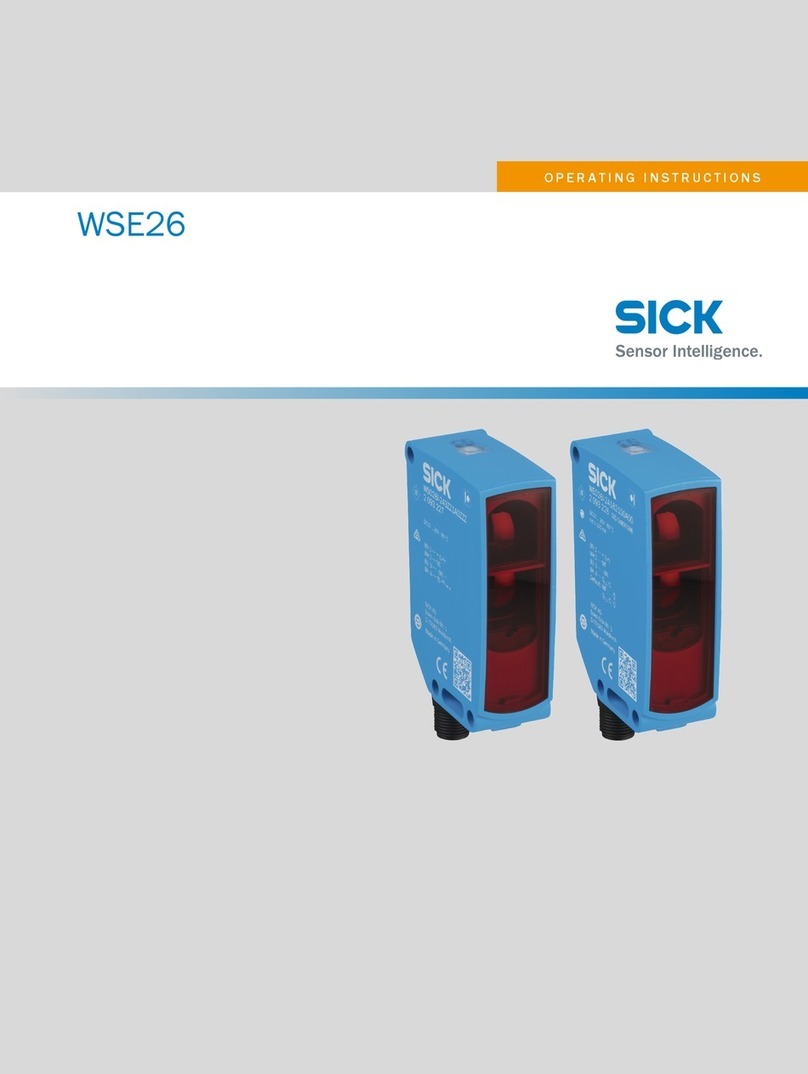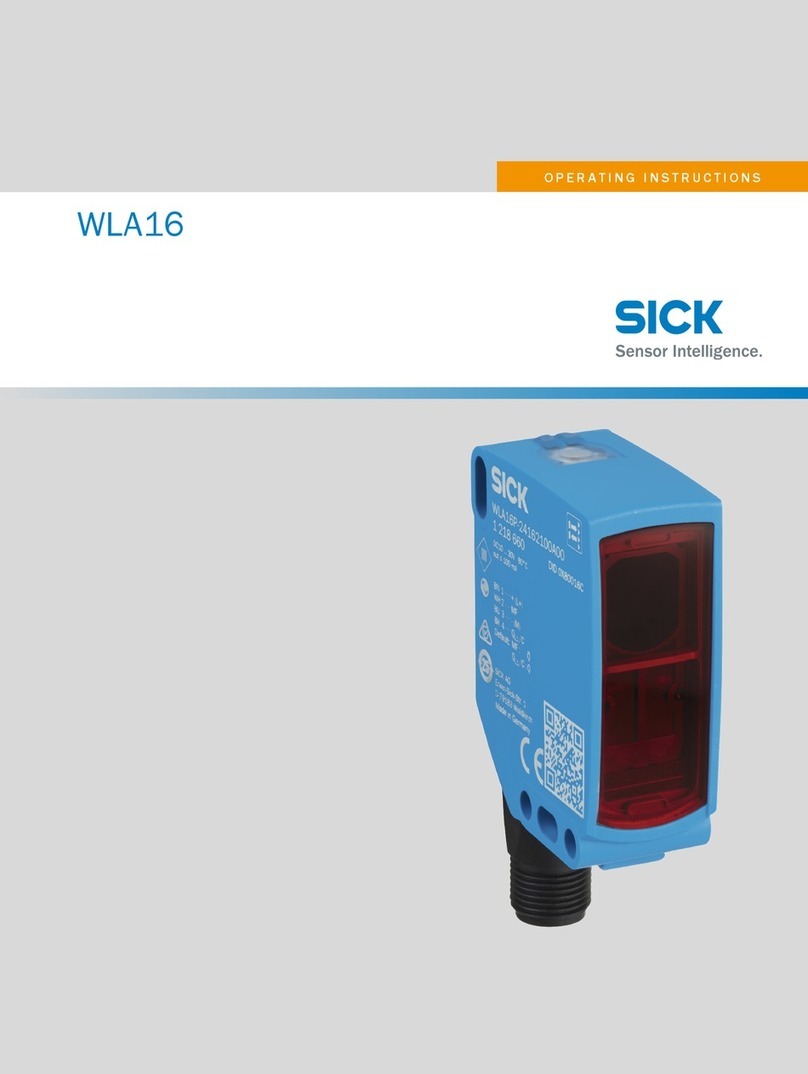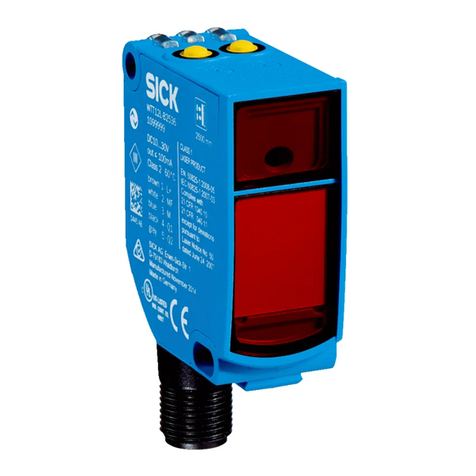
LED indicator/fault pattern /
LED indicator/fault pattern
Cause /
Cause
Measures /
Measures
Yellow LED flashes /
Yellow LED flashes
Sensor is still ready for operation,
but the operating conditions are
not ideal /
Sensor is still ready for operation,
but the operating conditions are
not ideal
Check the operating conditions:
Fully align the beam of light (light
spot) with the reflector / Clean the
optical surfaces (sensor and
reflector) / Readjust the sensiti‐
vity (potentiometer) / If the poten‐
tiometer is set to the max. sensing
range: Reduce the distance bet‐
ween the sensor and the reflector,
and check the reflector type
against Graphic E / Reflector is
not suitable for the application in
question (we recommend only
using SICK reflectors) / Check
sensing range and adjust if neces‐
sary, see Graphic E / Distance
between the sensor and the
reflector is too long /
Check the operating conditions:
Fully align the beam of light (light
spot) with the reflector / Clean
the optical surfaces (sensor and
reflector) / Readjust the sensiti‐
vity (potentiometer) / If the poten‐
tiometer is set to the max. sensing
range: Reduce the distance bet‐
ween the sensor and the reflector,
and check the reflector type
against Graphic E / Reflector is
not suitable for the application in
question (we recommend only
using SICK reflectors) / Check
sensing range and adjust if
necessary, see Graphic E / Dis‐
tance between the sensor and the
reflector is too long
Signal interruptions when object is
detected /
Signal interruptions when object is
detected
Depolarizing property of the
object surface (e.g., tape), reflec‐
tion /
Depolarizing property of the
object surface (e.g., tape), reflec‐
tion
Reduce sensitivity or change the
position of the sensor /
Reduce sensitivity or change the
position of the sensor
8 Disassembly and disposal
The sensor must be disposed of according to the applicable country-specific regulations. Efforts
should be made during the disposal process to recycle the constituent materials (particularly pre‐
cious metals).
9 Maintenance
SICK sensors are maintenance-free.
We recommend doing the following regularly:
1. Clean the external lens surfaces
2. Check the screw connections and plug-in connections
No modifications may be made to devices.
Subject to change without notice. Specified product properties and technical data are not written
guarantees.
Disassembly and disposal
Irrtuemer | SICK 5
